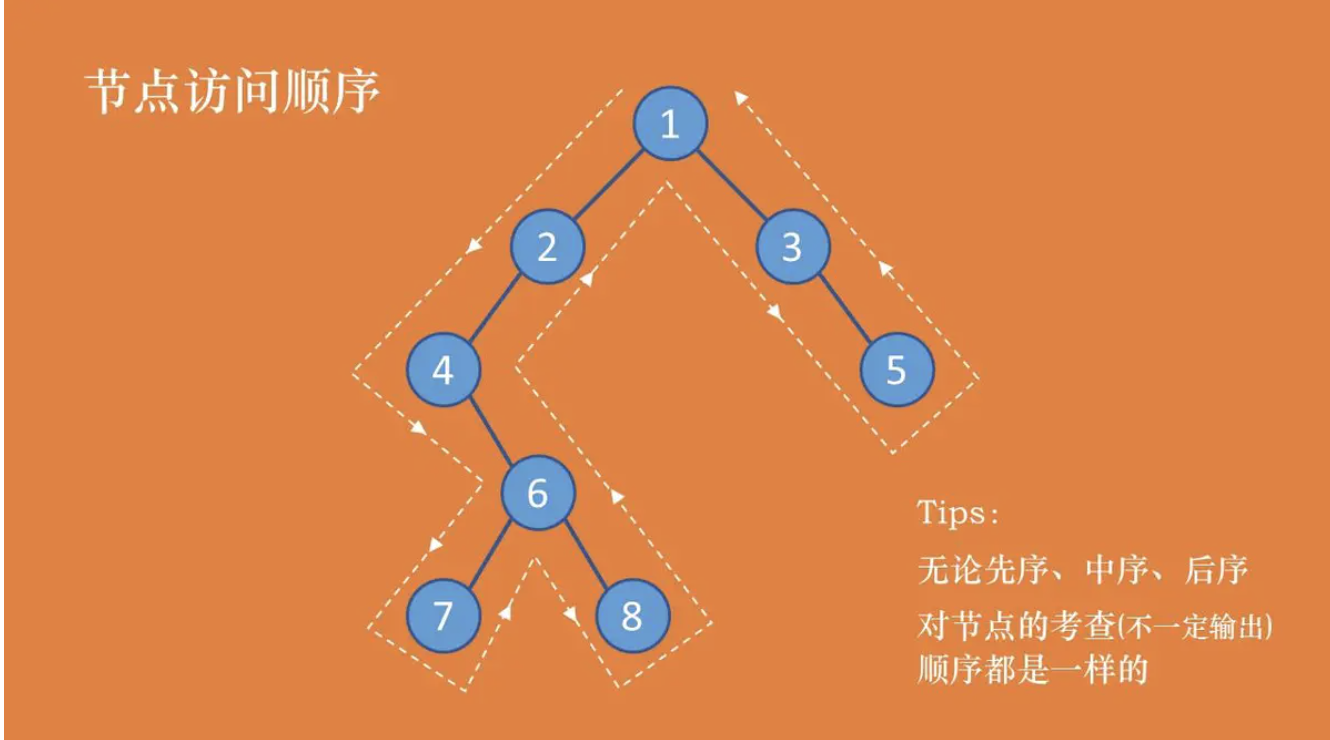二叉树的先序、中序、后序遍历
树节点:
1 | class TreeNode { |

先序:1 2 4 6 7 8 3 5
中序:4 7 6 8 2 1 3 5
后序:7 8 6 4 2 5 3 1
先序:考察到一个节点后,即刻输出该节点的值,并继续遍历其左右子树。(根左右)
中序:考察到一个节点后,将其暂存,遍历完左子树后,再输出该节点的值,然后遍历右子树。(左根右)
后序:考察到一个节点后,将其暂存,遍历完左右子树后,再输出该节点的值。(左右根)
递归先序遍历
递归先序遍历很容易理解,先输出节点的值,再递归遍历左右子树。中序和后序的递归类似,改变根节点输出位置即可。
1 | // 递归先序遍历 |
非递归先序遍历
因为要在遍历完节点的左子树后接着遍历节点的右子树,为了能找到该节点,需要使用栈来进行暂存。中序和后序也都涉及到回溯,所以都需要用到栈。
1 | // 非递归先序遍历 |
递归先序遍历: 1 2 4 6 7 8 3 5
非递归先序遍历:1 2 4 6 7 8 3 5
递归中序遍历
过程和递归先序遍历类似
1 | // 递归中序遍历 |
非递归中序遍历
和非递归先序遍历类似,唯一区别是考查到当前节点时,并不直接输出该节点。
而是当考查节点为空时,从栈中弹出的时候再进行输出(永远先考虑左子树,直到左子树为空才访问根节点)。
1 | // 非递归中序遍历 |
递归中序遍历: 4 7 6 8 2 1 3 5
非递归中序遍历:4 7 6 8 2 1 3 5
递归后序遍历
过程和递归先序遍历类似
1 | // 递归后序遍历 |
非递归后序遍历
后续遍历和先序、中序遍历不太一样。
后序遍历在决定是否可以输出当前节点的值的时候,需要考虑其左右子树是否都已经遍历完成。
所以需要设置一个lastVisit游标。
若lastVisit等于当前考查节点的右子树,表示该节点的左右子树都已经遍历完成,则可以输出当前节点。
并把lastVisit节点设置成当前节点,将当前游标节点node设置为空,下一轮就可以访问栈顶元素。
否者,需要接着考虑右子树,node = node.right。
1 | // 非递归后序遍历 |
递归后序遍历: 7 8 6 4 2 5 3 1
非递归后序遍历:7 8 6 4 2 5 3 1
